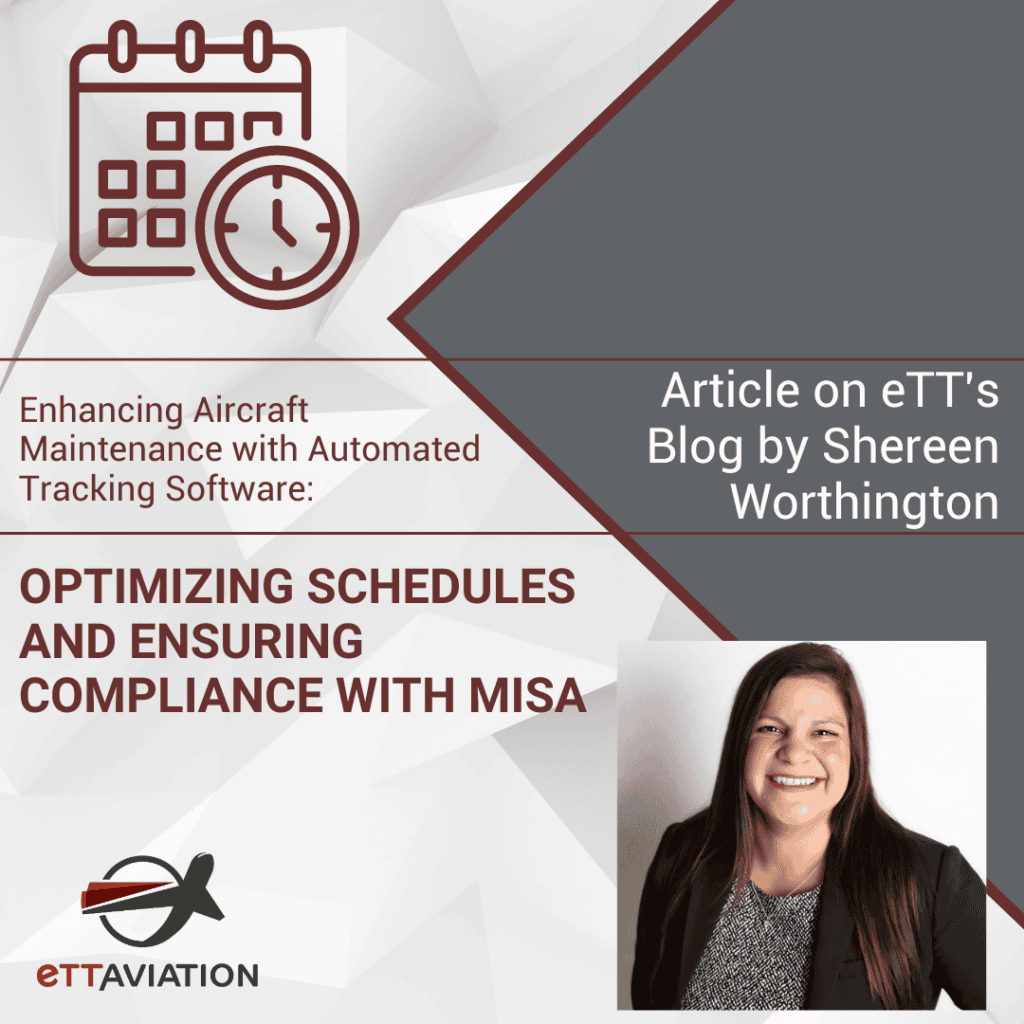By Shereen Worthington, Product Director, MISA at eTT Aviation
In the intricate world of aviation, managing aircraft maintenance is not just about keeping schedules; it’s about ensuring precision, safety, and compliance with stringent regulatory standards. At eTT Aviation, we understand the complexities involved in aircraft maintenance management. This is why our Management Information System for Aviation (MISA) integrates powerful automated tracking software designed to optimize maintenance schedules and guarantee compliance with all necessary regulations.

The Importance of Streamlined Maintenance Scheduling
Aircraft maintenance is a critical aspect of aviation operations, demanding meticulous attention to detail and stringent adherence to schedules. Delays or errors in maintenance can lead to significant downtime, increased costs, and, critically, safety risks. Automated tracking systems like MISA are designed to streamline this complex process, ensuring that maintenance tasks are performed on time and according to the highest standards.
MISA’s Approach to Maintenance Tracking
MISA provides a comprehensive toolkit that allows aviation companies to manage routine and non-routine maintenance tasks efficiently. Our system ensures that all maintenance activities are tracked from inception to completion, providing real-time updates and alerts. This level of detail not only helps maintenance crews stay on top of their tasks but also provides management with clear visibility into the status of aircraft maintenance.
- Automated Scheduling and Reminders: MISA automatically schedules maintenance tasks based on predefined intervals and usage metrics, such as flight hours or number of landings. It sends timely reminders to ensure no maintenance activity is overlooked, thus preventing potential aircraft downtime.
- Compliance with Regulatory Standards: One of MISA’s core strengths is its ability to ensure compliance with relevant aviation and company-specific regulations. MISA also maintains detailed logs of all maintenance activities, which are essential during audits or inspections.
- Integration with Inventory Management: MISA integrates maintenance tracking with inventory management, ensuring that all necessary parts are available when needed. This integration reduces delays in maintenance processes, as the system automatically alerts the inventory department when specific parts are nearing their reorder point.
- Data-Driven Decision Making: With MISA, aviation companies can make informed decisions based on comprehensive data analytics. Our system analyzes maintenance trends and identifies patterns that could indicate potential issues before they become critical. This proactive approach not only saves costs but also extends the lifespan of aircraft.
The Impact of MISA on Aircraft Maintenance
Since its implementation, MISA has significantly transformed how our clients handle aircraft maintenance. For instance, during my tenure as the Finance Manager at L3 Harris, MISA was instrumental in overhauling our maintenance operations. The ability to predict maintenance needs, coupled with robust compliance and inventory features, reduced our aircraft downtime by over 30% and cut maintenance-related costs substantially.
As the Product Director of MISA at eTT Aviation, I’ve seen first-hand how our software empowers teams to achieve more with less — less time, less cost, and fewer errors. It’s not just about maintaining aircraft; it’s about elevating the entire maintenance process.
Conclusion
In conclusion, MISA’s automated aircraft maintenance tracking software stands out as a pivotal tool in the aviation industry. By ensuring maintenance schedules are optimized and compliance with regulatory standards is met, MISA helps aviation companies maintain operational integrity, enhance safety, and achieve greater efficiency. It’s a testament to how smart solutions can drive the future of aviation maintenance, and I am proud to lead a product that plays such a crucial role in advancing the safety and efficiency of the aviation industry.